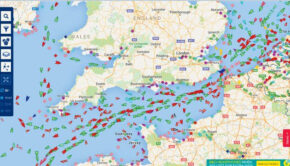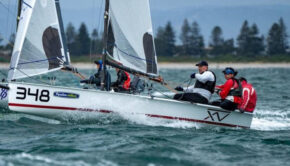Ditch Kit: Don’t Leave Home Without It!
Published on February 8th, 2022
The Storm Trysail Club is a private club dedicated to blue water sailing, and is open only to expert offshore sailors who have experienced storm conditions and are capable of commanding a sailing vessel in such conditions. The club actively supports events and education, and has shared the following report regarding Ditch Kits:
A recent email from a Safety at Sea Seminar participant asked if we have a Ditch Kit Checklist we recommended. This sparked a lively email discussion among the Storm Trysail Club members who volunteer as our Safety at Sea organizers.
Of note, World Sailing has their complete Offshore Regulations that details Grab Bags in 4.21 (page 20) but for a more plain English version, these are a few recommendations compiled by Rich du Moulin. We welcome your feedback, comments, or stories as well! So tells us in the comments below or email us at seamanship@stormtrysail.org.
———-
This Ditch Kit is suitable for a 600-mile offshore race in a 40-foot boat and crew of eight in temperate waters where rescue is not remote (within 24 hours): Bermuda Race, for example. A Transatlantic Race in colder conditions might suggest survival suits in a second bag. A Galapagos-Marquesas voyage, remote from shipping lanes, would warrant food and water for minimum 5-days and perhaps some reading material!
For a crew greater than 10-12, we suggest two rafts and two ditch kits, with crew assignments as part of the Watch Bill. We also recommend you reference section 4.21 of the Offshore Special Regulations (OSR).
Ditch Kit
• Ditch Kit Bag: sturdy, built-in flotation & waterproof, bright color, internal pockets, fixed white light, ten foot pennant with carabiner (to attach to raft), yacht name
• VHF: battery powered (not rechargeable); spare batteries in Ziploc; on/off switch taped off
• EPIRB: Registered to boat (for Coast Guard)
• AIS Beacon: Registered (for nearby vessels)
• GPS: Handheld
• Flashlights: Two small LED and one small searchlight; on/off switch taped off; spare batteries in Ziploc; 12 light sticks
• Flares: Six SOLAS parachutes; 4 handheld red; 2 smoke
• Water*: 12-pack 16 oz plastic; 2 Gatorade quarts
• Other:
— Seasick pills, sunscreen, crew prescriptions
— Patch kit: raft clamps, patches & pump
— Rescue mirror & whistle
— Knife (file off sharp tip)
— One space blanket per crew
— Ziploc Granola Bars
— Ziploc toilet paper & Package of wipes
— Wool caps & reading glasses
— Passports in Ziploc
— Ten large Ziplocs
— Spare Sat-phone
Separate from Kit: 4 one-gallon water jugs with pennants & carabiners.
QUESTIONS & ANSWERS:
Why pennants with carabiners?
Answer: To attach Ditch Kit or accessories to liferaft, or slide along the painter to crew in the raft.
Why battery-powered VHF, GPS, and lights?
Answer: Rechargeable units after weeks or months sitting in the ditch bag lose their charge. Battery units permit replenishing with spare batteries.
Why tape off the on/off switch?
Answer: So the unit doesn’t turn on when packed or jostled, and run out of juice.
Why AIS?
Answer: The EPIRB reaches out to US Coast Guard in Washington DC, but passing yachts or ships won’’t receive it. However, they will see you on AIS. Registering the AIS to the vessel also helps. Interesting fact: rescue helicopters only receive EPIRB and VHF, not AIS.
Why put flares in the Ditch Kit when you store others in a separate container?
Answer: Why take the chance of the container not making it to the raft? Or if you have two rafts, do you have two containers? If your container has the up-to-date flares required by the USCG and/or Race Organizer, consider putting flares that are slightly overdue in the Ditch Kit.
Why Plastic Water & Gatorade Bottles?
Answer: They are cheap and sturdy, and once empty can be refilled with rainwater.
Why ten big Ziploc bags?
Answer: to catch rainwater, and seasickness.
Where Should the Ditch Bag be stored?
Answer: Near the foot of the companionway, a cockpit locker, or raft locker.
Why have extra gallon water jugs with pennants nearby?
Ditch kits do not have room for adequate water, which also adds excessive weight.
If you can only take two items into the raft, what would they be?
Answer: EPIRB and Water. With a properly registered EPIRB, rescue should be on the way very quickly. With water aboard, you will live to be rescued.









 We’ll keep your information safe.
We’ll keep your information safe.